Source: YouTube
Source: Sky News Australia & YouTube
Posted in Climate Change | Leave a Comment »
Source: Center for Spiritual Living/YouTube
Posted in Awakening, Body/Mind/Spirit, Books, Consciousness, Insights, Learning, Mindfulness, Peace & Love, Realizations, Seminars, Unity Consciousness | Leave a Comment »
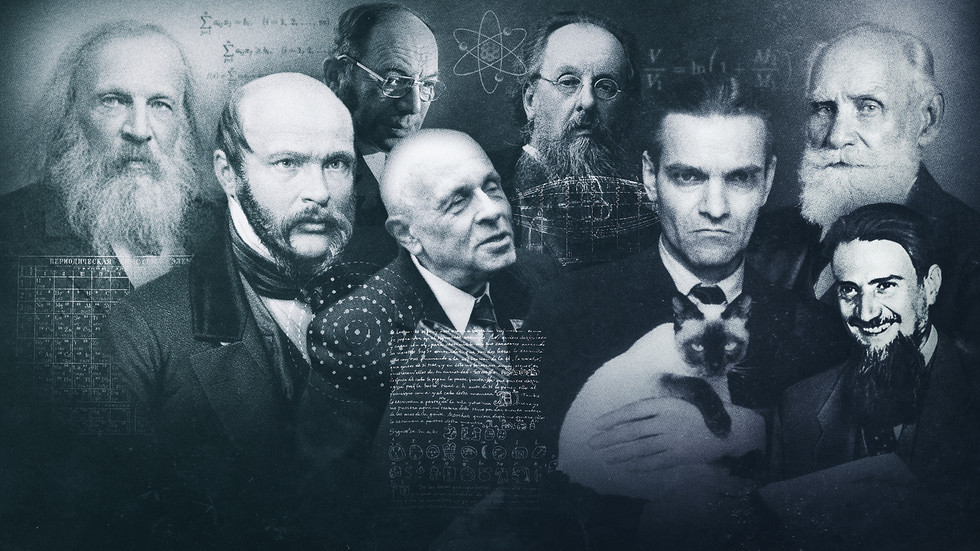
By Anastasia Safronova
February 8 marks the day of Russian science, when past achievements are celebrated to inspire new generations for the future. The list of Soviet and Russian specialists who have made crucial contributions to physics, chemistry, medicine and biology amongst others is too long to outline, but their work is used every day around the world.
The Periodic Table
The Periodic Table of Chemical Elements, a basic tool used by scientists to explore matter and foresee the existence of new elements, was created by Russian scientist Dmitry Mendeleev in 1869. In 2019, the UN celebrated The International Year of the Periodic Table, to mark the 150th anniversary of the discovery it called“a window on the universe.”
Humanity has known about several chemical elements since ancient times. In the 17th century, German alchemist Hennig Brand accidentally discovered a new element – phosphorus – and triggered a wave of scientific experiments. A hundred years later, French chemist Antoine Lavoisier wrote ‘Elementary Treatise of Chemistry’, considered to be the first modern chemistry textbook.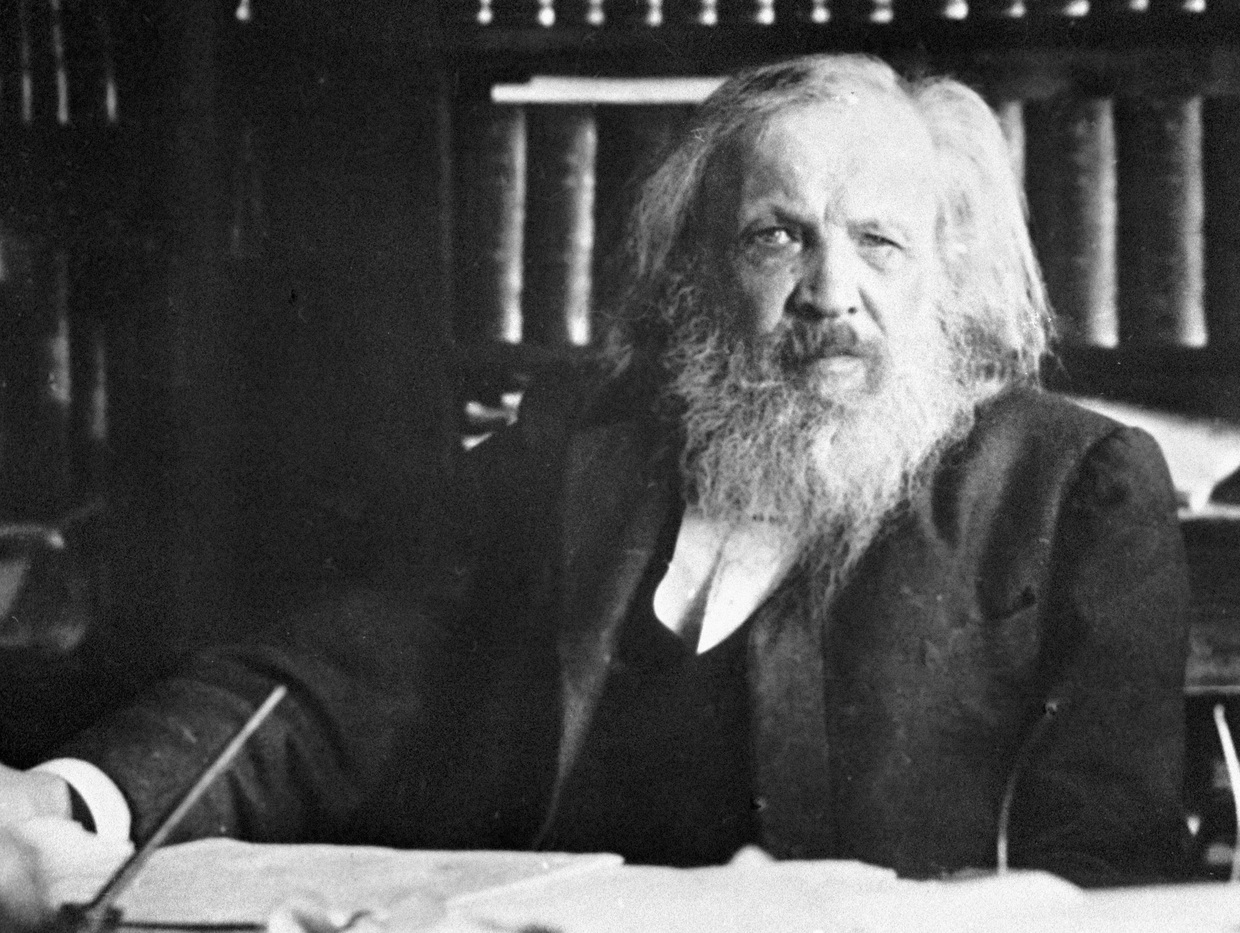
D. M. Mendeleev at his desk in the office of the Chamber of Weights and Measures. © Sputnik / F. Bloombach
Mendeleev was only 35 years old when he made the greatest discovery of his life.
He had suspected a relationship between the elements since he was a student, and over the years, this idea became an obsession. “…The anticipation of the imminent resolution of a question that tormented me put me in an excited state,” he recalled. “For several weeks I slept fitfully, trying to find that magical principle… And then one fine morning, after spending a sleepless night… I lay down on the sofa in the office and fell asleep. And in a dream, a table appeared to me quite clearly.” Mendeleev arranged the elements by atomic weight and noted periodicity of properties. Then, he grouped the elements with similar properties below each other.
This system allowed Mendeleev to predict the existence of further elements. In the middle of the 19th century, only about 63 elements were known whereas now 118 elements currently populate the periodic table. The latest addition, oganesson, is named after Russian nuclear scientist Yuri Oganesyan, who assisted in the discovery of several superheavy elements, now added to the table.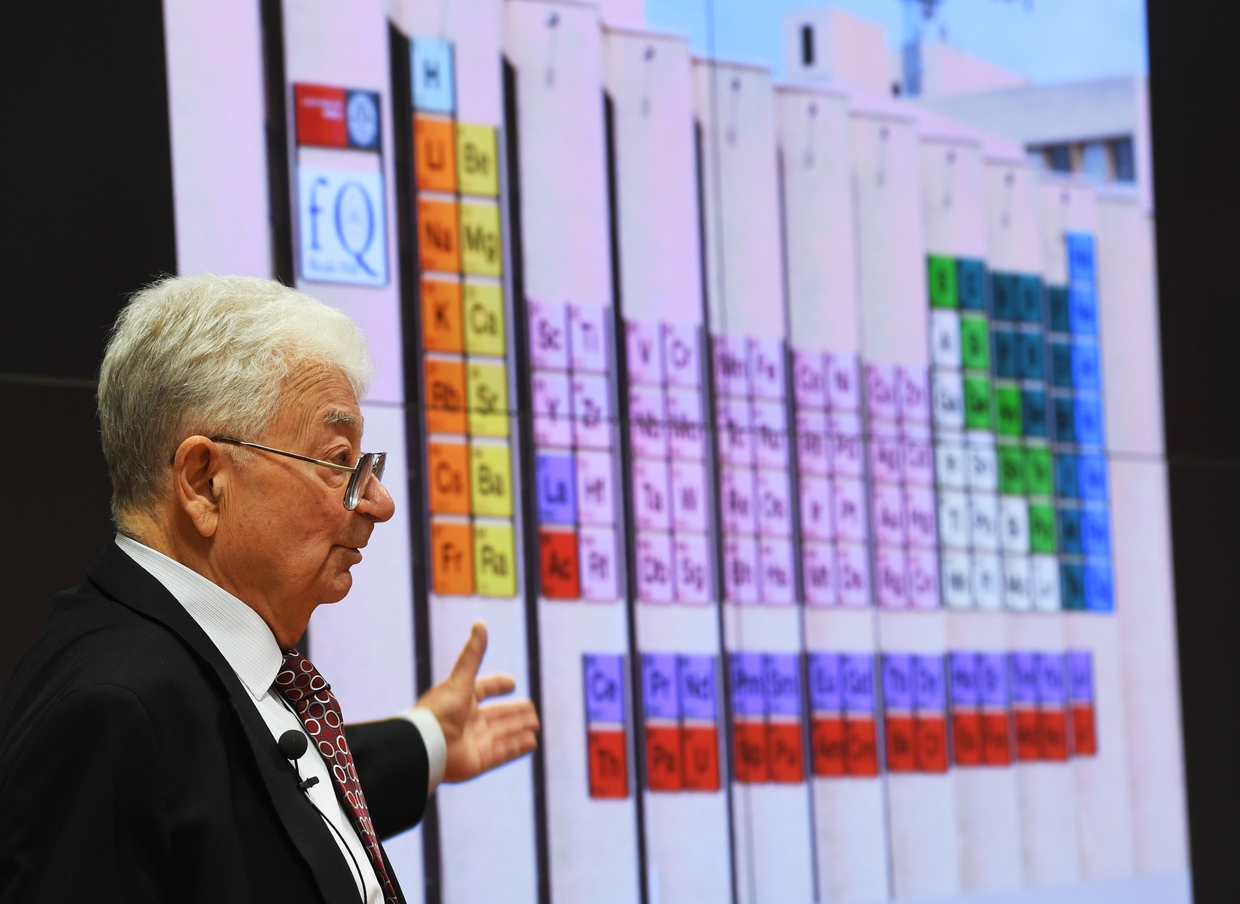
Scientific Director of the JINR Nuclear Research Institute Yuri Oganesyan after the launch of the DC-280 cyclotron, within the framework of the regular session of the Committee of Plenipotentiaries of the member States of the Joint Institute for Nuclear Research in Dubna. © Sputnik / Grigory Sysoev
Field Surgery
Doctor Nikolay Pirogov made an immense contribution to medicine worldwide and is often described as the “father of Russian medicine”. He is considered an innovator and was the founder of field surgery – or offering complex treatment to the wounded in the middle of combat.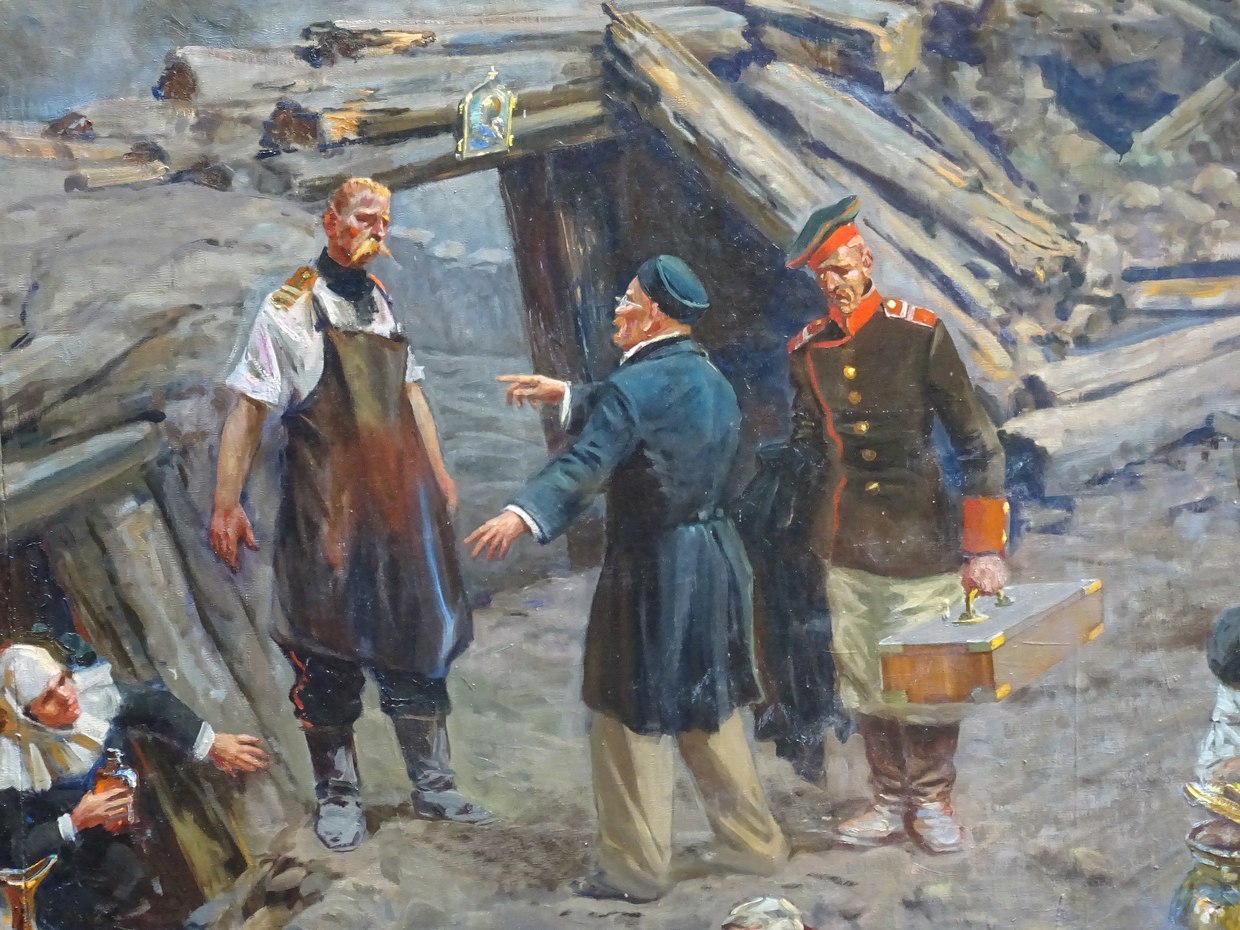
N.I. Pirogov (in the middle stands with his back). Fragment of the panorama ‘Defense of Sevastopol’ by F. Rubo
Pirogov became the first surgeon to use ether as an anesthetic in 1847 while working in a field hospital. He was the main surgeon in the besieged city of Sevastopol through the Crimean War in the 1850s and was also one of the first to use orthopedic casts from plaster, which helped prevent amputation of limbs.
Pirogov further improved Russian field medicine by applying the innovations and practice of his contemporaries. During the Crimean War, Pirogov emulated Florence Nightingale by training a Russian group of female nurses. Additionally, after meeting the famous French surgeon Dominique Jean Larrey in Paris, Pirogov introduced Larrey’s triage system to the Russian army’s medical corps.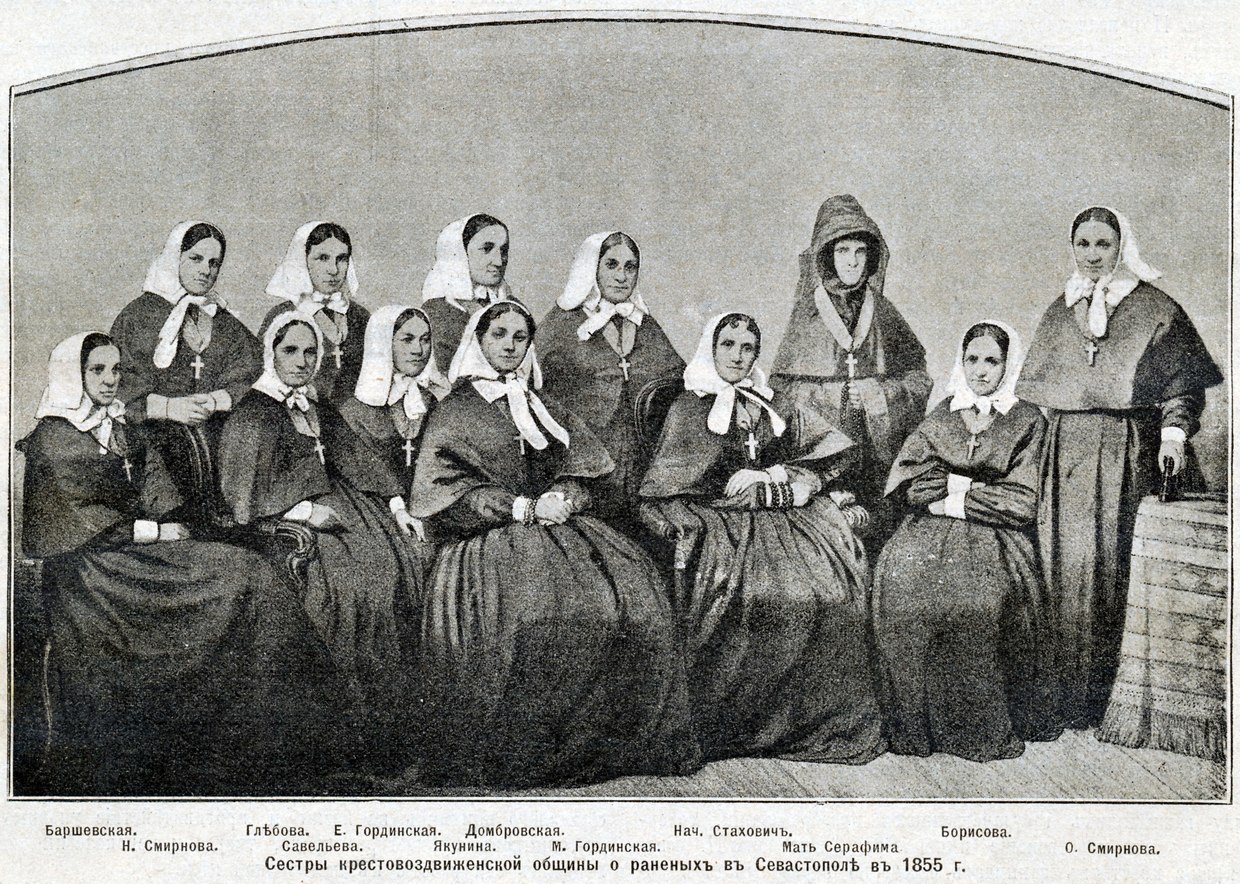
Sisters of the Holy Cross Community, Sevastopol, 1855. © Wikipedia
Classical Conditioning
Even if you’ve never heard about Russian neurologist and physiologist Ivan Pavlov, you’re probably familiar with ‘Pavlov’s dog’.
While researching the digestion process of animals, Pavlov realized that dogs began to salivate when they saw the assistant who fed them. The scientist presented a stimulus – the sound of a metronome – and then fed the dog. After several attempts, the animals started to salivate in response to the stimulus.
The experiment became a base for the classical conditioning theory: An unconditioned stimulus (in Pavlov’s case – food) caused an unconditioned response (dog’s salivation). A neutral stimulus (the metronome’s sound without food) didn’t cause any reaction, but after conditioning (offered with food), the metronome’s sound became a conditioned stimulus and caused a conditioned reaction (salivation) even if food didn’t follow. 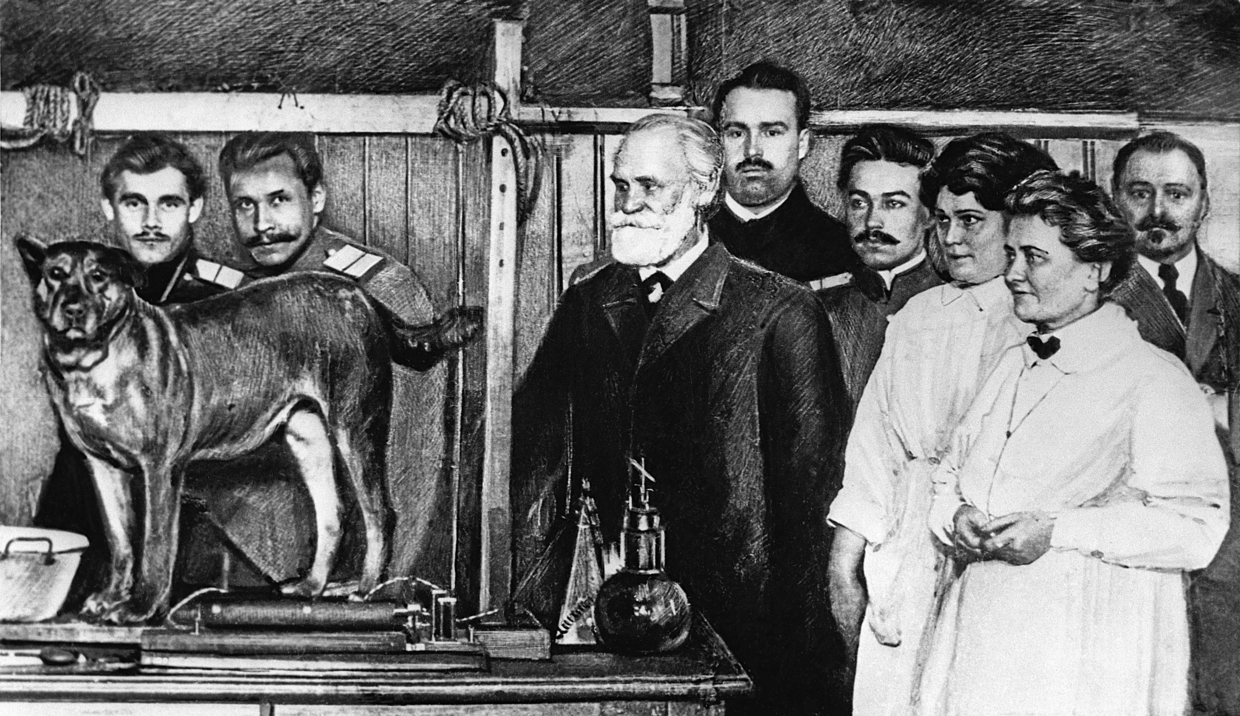
Ivan Pavlov and his colleagues from the Physiology department at the Military Medical Academy in Petrograd, 1914. © Sputnik / RIA News
Classical conditioning helps understand the basic form of learning and is often used in behavioral therapies. Specialists also use it to investigate and treat addictions.
In 1904, Pavlov became the first Russian to be awarded The Nobel Prize in Physiology or Medicine “in recognition of his work on the physiology of digestion, through which knowledge on vital aspects of the subject has been transformed and enlarged.”
Deciphering the Maya Script
“You don’t need to jump across the pyramids to understand how to work with texts” – Yuri Knorozov.
Knorozov was a Soviet linguist and ethnographer who managed to decipher the script of the Maya civilization. He published an article in 1952 proclaiming his achievement. At the time, he was just 30 years old, but perhaps more remarkable is that he had never visited Central America.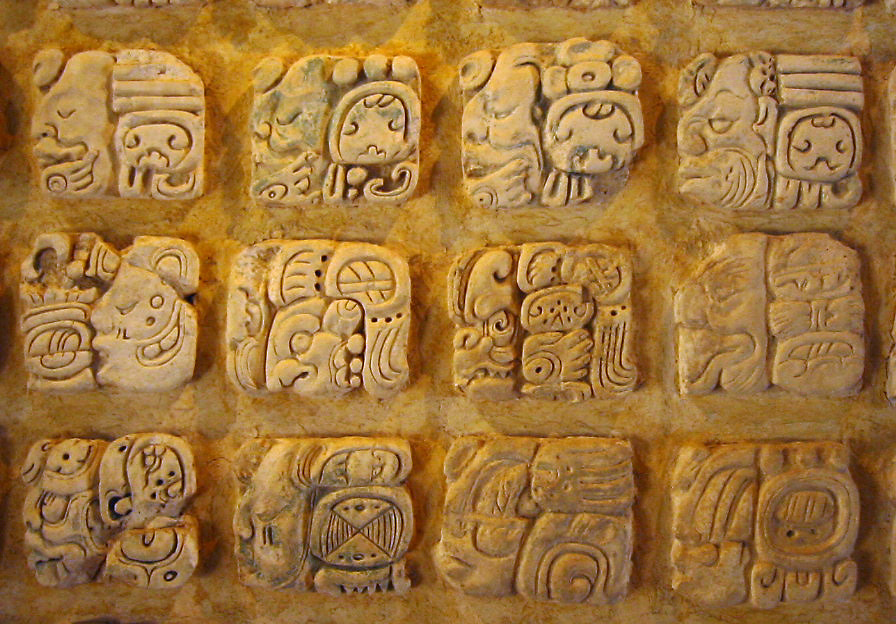
Maya stucco glyphs diplayed in the museum at Palenque, Mexico. © Wikipedia
Knorozov studied Egyptology at Moscow State University, and was fascinated by the Mayan culture. As he recalled, he was heavily influenced by a 1945 article by German researcher Paul Schellhas titled, “Is deciphering of the Maya hieroglyphs an unsolvable problem?”.
While working on the Maya scripts, Knorozov demonstrated that the hieroglyphs represent sounds. Later, he composed a catalog of 540 symbols, and explained the method on how to use them to read and understand the Maya texts.
Knorosov’s work was translated into many languages and sparked discussions in the scientific community for decades. Soviet scientists led by Knorozov went on to work on the decipherment of other historical mysteries such as the rongorongo script of Easter Island and the Indus script.
In Mexico, there are monuments to Knorozov in the capital and in the Yucatan peninsula city of Merida where the Mayan civilization existed. The scientist is portrayed together with his cat Asya that Knorozov called his “co-author”.
Yuri Knorozov © Wikimedia Commons
Development of Lasers
It’s extremely difficult to imagine the modern world without lasers. They are used everywhere – in medicine, industry, electronic devices and beyond. ‘Laser’ is an acronym for Light Amplification by Stimulated Emission of Radiation. The creation of such devices was predicted by Albert Einstein in 1917, when he described the process of ‘stimulated emission’ – the release of energy from an excited atom by artificial means.
Before scientists developed a laser, they worked on the ‘maser’ concept (Microwave Amplification by Stimulated Emission of Radiation). The research was done simultaneously in the USSR and in the US. In 1952, Soviet physicists Nikolay Basov and Alexander Prokhorov described the theoretical principles for maser operation.
Later, they proposed a principle for achieving population inversion by pumping a three-level system. This technique proved to be highly effective and is now widely used in various lasers and spectral ranges.
Simultaneously, American physicist Joseph Weber described how to use stimulated emissions to make a microwave amplifier. Using this method, physicist Charles H. Townes built the first maser.
In 1964, Basov, Prokhorov and Townes shared the Nobel Prize “for fundamental work in the field of quantum electronics, which has led to the construction of oscillators and amplifiers based on the maser-laser principle.”
Russian physicists Nikolai Basov (1922-2001) and Alexander Prokhorov (1916-2002), the founders of quantum electronics, who won the Soviet Union’s Lenin prize in 1959 and the world’s Nobel prize in 1964. © Sputnik / D. Chernov
Optical Holography
Holography is generally best known as a method to create a 3D image, which can be seen without any special glasses or other devices. Holography itself was invented by Hungarian-British physicist Dennis Gabor in 1947. While trying to improve an electron microscope, he discovered a method to record the entire field information – amplitude and phase – and not just the usual intensity.
The breakthrough in the technology followed laser invention and development, which were distinguished from other light sources by their coherence (meaning that the wavelengths of the laser light are in phase in space and time).
In the 1960s, Soviet physicist Yuri Denisyuk created a single-beam technique to produce a high quality image. This method became widely known as “Denisyuk holography”. When a Denisyuk hologram is recorded with at least three lasers, full color holograms can be obtained.
Interestingly, Denisyuk took inspiration from the Lippmann color photography technique (interferential photography), which is a color-only technique that records the entire visible color spectrum. When a Denisyuk hologram is recorded with at least three lasers, full color holograms, depicting a very realistic image of an object, can be obtained.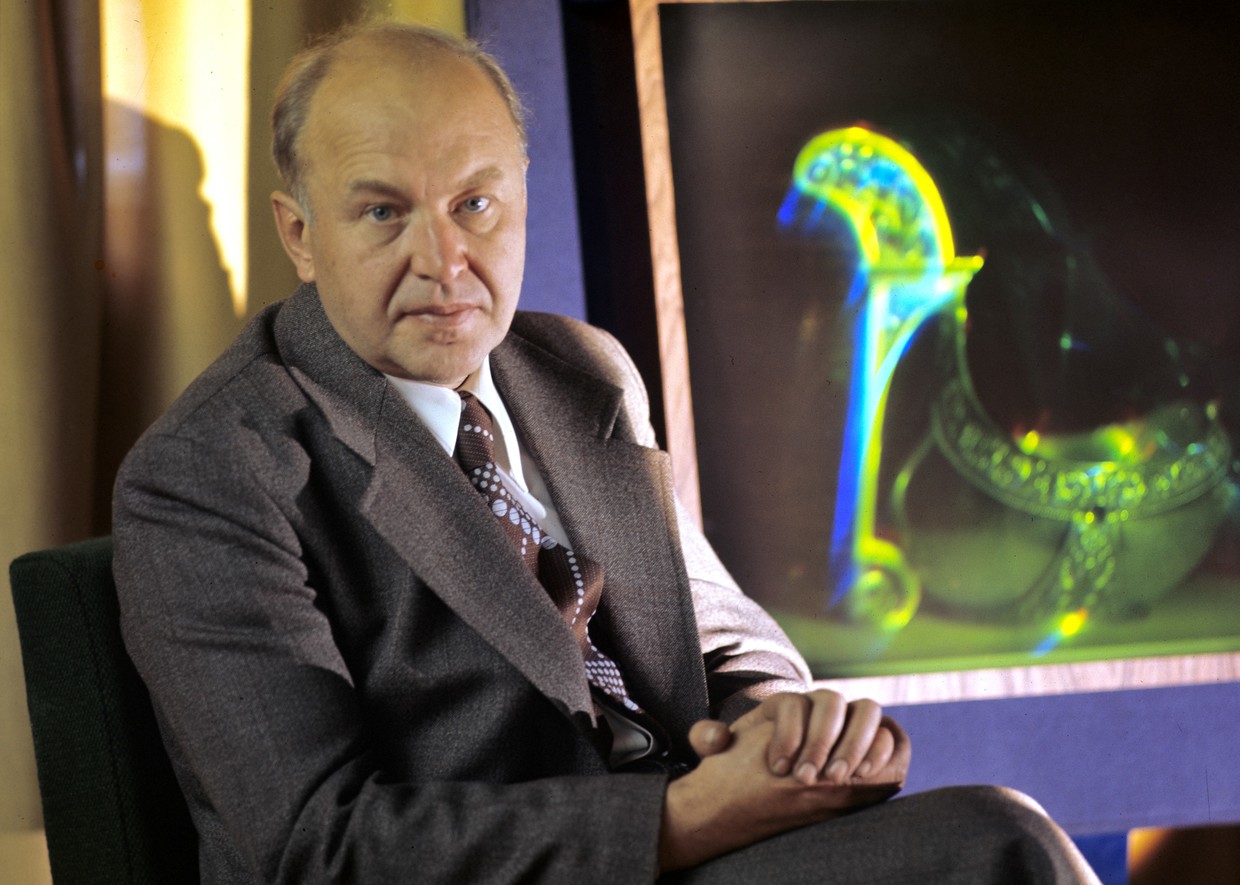
Laureate of the Lenin Prize, correspondent member of the USSR Academy of Sciences, Yury Denisyuk, in the Leningrad laboratory of holography of the Vavilov State Optical Institute. © Sputnik / V. Baranovskiy
Linear Programming
Soviet economist Leonid Kantorovich was the first to describe the method now known as ‘linear programming,’ used in industry and business planning, having developed the idea in the 1930s. As Kantorovich recalled, he faced a formidable task to find the optimal loading for peeling machines. While searching for an effective solution, Kantorovich took into account many other similar problems, such as the effective use of agricultural land, which all seemed to fit a certain mathematical model. In 1975, the scientist shared a Nobel Prize with Dutch economist Tjalling C. Koopmans “for their contributions to the theory of optimum allocation of resources.”
Linear programming methods have since been improved by many scientists around the world. It is widely used in microeconomics and can be applied to planning, production and transportation to minimize production costs and maximize income.
Soviet mathematician and economist Leonid Kantorovich, one of the inventors of the linear programming method, recipient of the Nobel Memorial Prize in Economic Sciences and a Member of the Soviet Academy of Sciences. © Sputnik / Vladimir Vyatkin
Space Exploration
It’s nearly impossible to imagine the Soviet and Russian space programs without Konstantin Tsiolkovsky, universally recognized as the “father of human spaceflight.” Apart from being a brilliant scientist, Tsiolkovsky was quite an extraordinary man. At the age of 10, he almost completely lost his hearing and was forced to dedicate himself to self-education.
Most of Tsiolkovsky’s ideas outpaced his time. In 1895, he predicted artificial satellite development and use. In 1903, he published a mathematical equation, now known as the Tsiolkovsky rocket equation, describing rocket travel in space which is still used by aerospace engineers. Tsiolkovsky also envisioned and explained how future spaceships would overcome Earth’s gravity, described their flight path and how they would land. Decades later, his theories became reality, brought to life by new generations of scientists and engineers.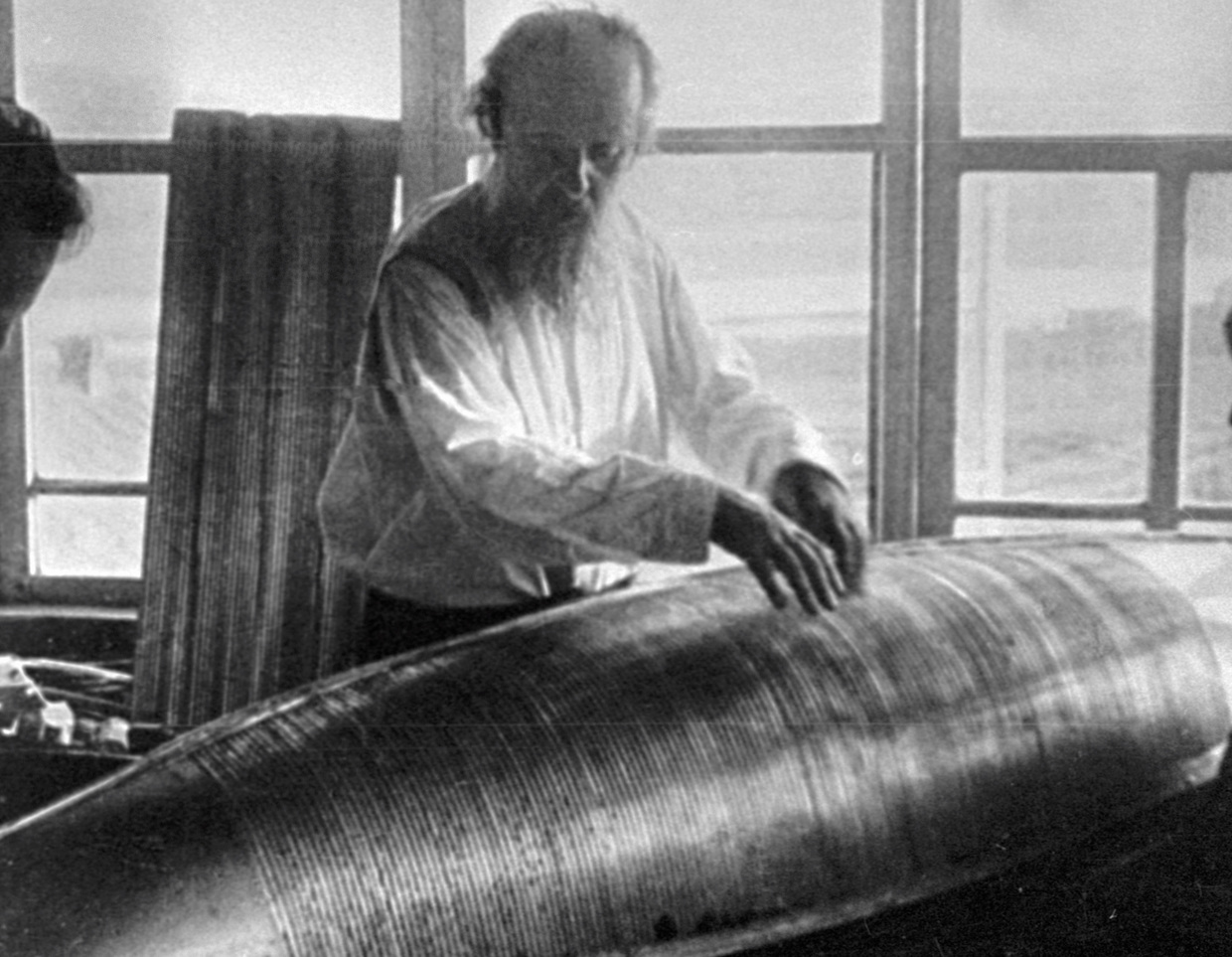
Konstantin Tsiolkovsky (1857-1935), the founder of interplanetary communication theory, in his workshop. © Sputnik / RIA News
In the 20s, schoolboy Valentin Glushko wrote several letters to Tsiolkovsky, detailing his dreams about space flight, which later became the point of his life. Glushko would go on to design rocket engines that took Soviet satellites and cosmonauts to space, as well as the “Buran” spaceplane.
Energia Buran, the Soviet manned space system, which includes an Energia new powerful launch rocket and the Buran space shuttle. © Sputnik / Alexander Mokletsov
Sergey Korolev is also a significant figure in the history of space exploration. He led the Soviet space program and worked on the launch of the Sputnik 1 satellite. Korolev’s guidance oversaw many other aerospace achievements including Yuri Gagarin’s ground breaking space flight, Alexey Leonov’s first human spacewalk, the first woman in space, Valentina Tereshkova, and a number of other groundbreaking space missions. 
Our Fatherland in Photos exhibition. The Manege Central Exhibition Hall. Replica of the photo, Yuri Gagarin and Sergei Korolev, by I. Snegirev. © Sputnik / Snegirev Igor
Nuclear Reactions
Soviet and Russian atomic scientists have always been frontrunners in researching nuclear energy, and Igor Kurchatov is one of the most prominent. Kurchatov worked on the peaceful application of atomic energy while leading the Soviet nuclear weapons project. His work led to the first grid-connected nuclear power plant launched in the city of Obninsk in 1954, near Moscow.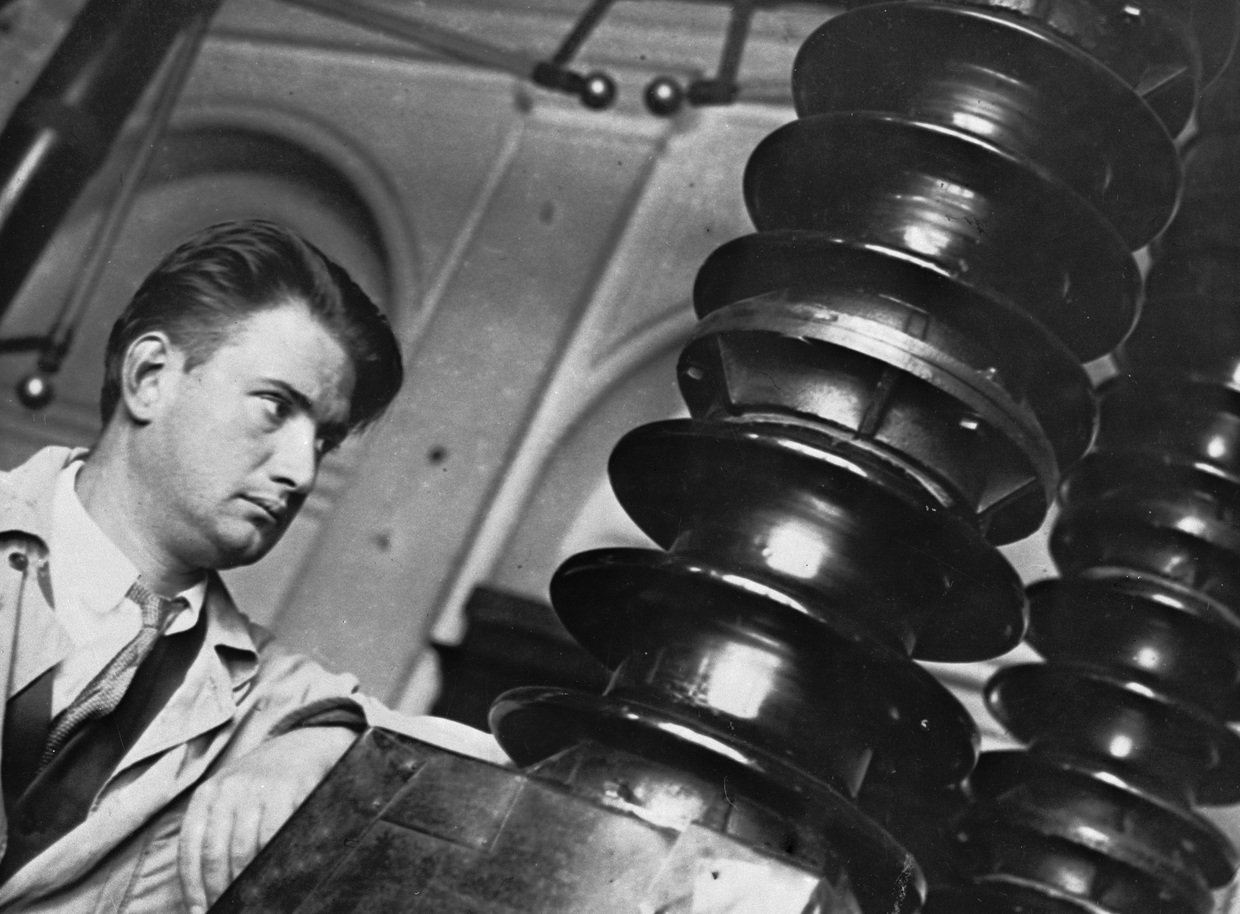
Igor Kurchatov © Sputnik / RIA News
Modern-day nuclear fusion relies heavily on the research of another globally-known Soviet physicist – Andrey Sakharov. Together with Nobel Prize-awarded scientist Igor Tamm, they developed the tokamak concept – a device that uses a powerful magnetic field to confine plasma and produce controlled thermonuclear fusion power. Their research forms the base of fusion reactor development today.
Both Kurchatov and Sakharov played key roles in the development of Soviet nuclear weapons. In 1949, a team led by Kurchatov tested the first Soviet nuclear bomb. Six years later, the first hydrogen bomb designed by Sakharov and his team was tested in the same area.
The prominent Soviet physicist and Academician of the Soviet Academy of Sciences Andrei Sakharov (1921-1989). © Sputnik / Boris Kaufman
The Denisovans
In the late 2000s, Russian archeologists made a surprising discovery: They found a new species of archaic human. They named it “The Denisovan”, after the Denisova cave where it was found. The cave’s location is in the Altai mountains in Siberia.
Archeological work at the site began in the 1970s. In 1990, Anatoly Derevyanko from the Institute of Archaeology and Ethnography of the Russian Academy of Science established a special research center in the area.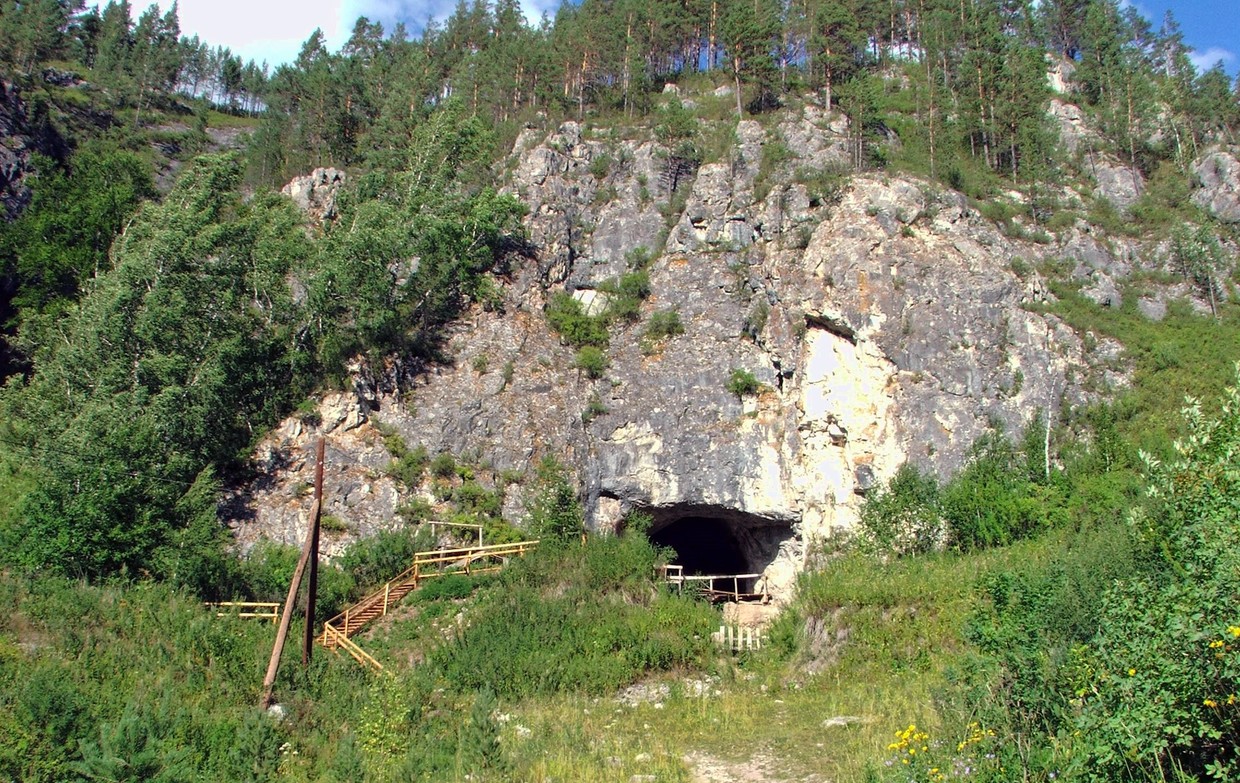
Denisova Cave: Soloneshensky district, Altai Krai. © Wikipedia
In 2008, a group of scientists led by Mikhail Shunkov found a finger bone of a young female. The bone contained well-preserved DNA, which was sequenced by the team of Swedish researcher Svante Pääbo at the Max Planck Institute in Leipzig, Germany. Following a series of tests, in 2010 they announced that the genetic material belongs to a previously unknown hominin.
Scientists now believe the Denisovans may have lived in the cave some 200 thousand years ago. The work in the Denisova cave continues, and likely holds even more secrets of human history.
Source: RT
ORDER YOUR FREEDOM BOOKS TODAY!
Sovereign’s Handbook by Johnny Liberty
(30th Anniversary Edition)
(3-Volume Printed, Bound Book or PDF)
A three-volume, 750+ page tome with an extensive update of the renowned underground classic ~ the Global Sovereign’s Handbook. Still after all these years, this is the most comprehensive book on sovereignty, economics, law, power structures and history ever written. Served as the primary research behind the best-selling Global One Audio Course.Available Now!
$99.95 ~ THREE-VOLUME PRINT SERIES
$33.33 ~ THREE-VOLUME EBOOK
Dawning of the Corona Age: Navigating the Pandemic by Johnny Freedom
(3rd Edition)
(Printed, Bound Book or PDF)
This comprehensive book, goes far beyond the immediate impact of the “pandemic”, but, along with the reader, imagines how our human world may be altered, both positively and negatively, long into an uncertain future. Available Now!
$25.00 ~ PRINT BOOK
$10.00 ~ EBOOK
Posted in History/Herstory, Science | Leave a Comment »
Atlantis: Excerpts from Our Story of Atlantis Written for the Hermetic Brotherhood (1903) | Nobulart
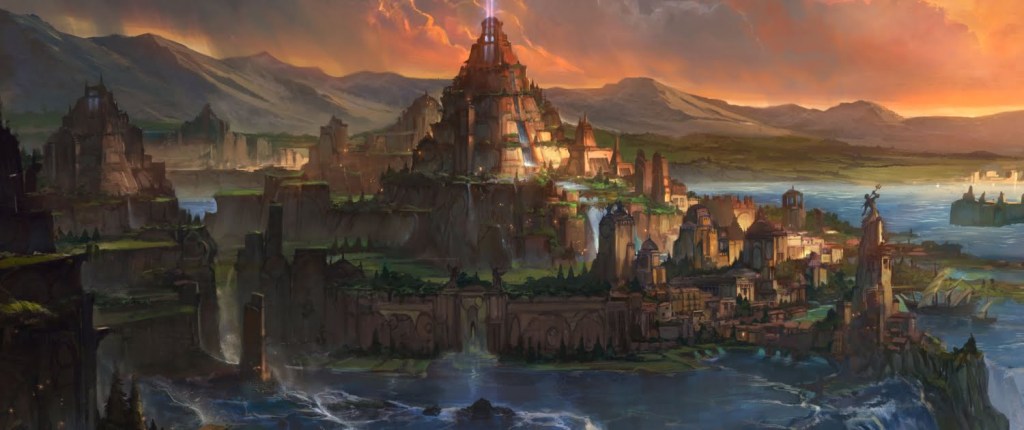
Facing the Pillars of Hercules was an island larger than Africa and Europe put together. Beside this main island there were many other smaller ones, so that it was easy to cross from one to another as far as the further continent. This land was indeed a continent, and the sea was the real ocean in comparison to which “The Sea” of the Greeks was but a bay with a narrow mouth.
In the Atlantic island a powerful federation of Kings was formed, who subdued the larger island itself and many of the smaller islands and also parts of the further continent. They also reduced Africa within the Straits as far as Egypt, and Europe and as far as Tyrrhenia. Farther aggression, however, was stopped by the heroic action of the then inhabitants of Attica, who, taking the lead of the oppressed States, finally secured liberty to all who dwelt within the Pillars of Hercules. Subsequently, both places were destroyed by mighty cataclysms, which brought destruction in a single day and night. The natural features of the Attic land were entirely changed and the Atlantic island sank bodily beneath the waves.
In the center of the Atlantic Island was a fair and beautiful plain. In the center of this plain and nearly six miles from its confines was a low range of hills. Here dwelt for many generations the renowned race of the Atlan, from whom the whole island and sea were named Atlantic or Atlantis. The ruling Kings ever handed down the succession of power to their eldest sons, the younger sons going into the priesthood. They were possessed of such wealth as no dynasty ever yet obtained or will procure easily hereafter. This wealth was drawn both from all foreign nations with whom the Atlantians traded and from Atlantis itself, which was especially rich in minerals, and possessed the only known mines of orichalcum in the world, a mineral with most wonderful and inexhaustible properties – a metal which was then second only to gold in its value.
The country was rich also in timber and pasturage. Moreover there were vast numbers of elephants, spices, gums and odorous plants of every description; flowers, fruit trees and vegetables of all kinds, and many other luxurious products which this wonderful Continent, owing to its beneficient climate, brought forth. These were sacred, beautiful, curious and infinite in number. Nor were the inhabitants content with simply the natural advantages of their glorious country, but also displayed a marvelous industry and skill in engineering and the constructive arts. For, in the center of the island they built a royal palace, every succeeding King trying to surpass his predecessor in adorning and adding to the building, so that it struck all beholders with the greatest admiration.
They cut about the Royal Palace a series of waterways or canals. These were bridged over at intervals, while an immense canal admitted the largest vessels from the sea, giving at once protection as a harbor, and making it more convenient for the transportation of freight to and from the interior. In fashioning their interior streams they left the docks cut out of the solid rock where their triremes could land their cargoes.
The stone used in their building was of three colors, white, black and red, so that many of the buildings presented a gay appearance.
Northeast of the center of the Continent, stood the great Temple. The interior was covered with silver,except for the pediments and pinnacles, which were lined with gold. Within, the roof was a magnificent mosaic of gold, ivory and orichalcum, and all walls, pillars and pavements were covered with orichalcum.
By a system of aqueducts leading from natural springs of hot and cold water, they had supplies for baths, and for the irrigation of their beautiful plantations and gardens. The docks were filled with shipping and naval stores of every description known to men at that time. The whole city teemed with a dense population. The main canal and largest harbor were crowded with merchant shipping returning from, or making ready to sail for, all parts of the world. The din and tumult of their commerce continued all day long, and the night through as well. Such is a general sketch of their wonderful city.
Now, as regards the rest of the country; it was very mountainous with exceedingly precipitous coasts, and the plain surrounding the city was itself environed by a mountain chain broken only at the sea entrance. The plain was smooth and level and of an oblong shape, lying North and South. The mountains were said to be the grandest in the world for their number, size and beauty. The whole country was a constant succession of prosperous and wealthy villages, for there was an abundance of rivers and lakes, meadows and pasturage for all kinds of cattle and quantities of timber. They surrounded this plain with an enormous canal or dyke, 101 feet deep, 606 feet broad, and 1,250 miles in length. By it the water from the mountains was conducted around the whole plain, and while a part flowed out to the sea, the rest was husbanded for irrigation. They were able, by raising two crops a year, to double their productive capacity.
In the polity of the Atlantians the Kings maintained an autocracy and the priesthood were their council of consultation in all matters of State, until at last the power passed into the hands of the priesthood.
For many generations, the rulers, King and priest remained obedient to their ancestral traditions. For they possessed true and altogether lofty ideas and exercised mildness and practical wisdom, both in the ordinary vicissitudes of life and in their mutual relations. The looked above everything except virtue. They considered things present of small importance, and contentedly bore their weight of riches as a burden. Nor were they intoxicated with luxury, but clearly perceived that wealth and possessions are increased by mutual friendship and the practice of true virtue; whereas, by a too anxious pursuit of riches the possessions themselves are corrupted and friendship also perishes therewith. Thus it was they reached the great height of prosperity we have described.
But when, at last their mortal natures began seeking to dominate and override the Divine within and about them, they commenced to display unbecoming conduct, and to degenerate; this blighting and finally destroying the fairest of their most valuable possessions.
The following is the Maya account of the destruction of Atlantis, from Dr. Augustus Le Plongeon’s rendering of the Troano manuscript:
“The year six Kan, on the eleventh Muluc, in the month Zac, there occurred terrible earthquakes, which continued without intermission until the thirteenth Chuen. The country of the hills of mud, the ‘land of Mu,’ was sacrificed. Being twice upheaved, it suddenly disappeared during the night, the basin being continually shaken by volcanic forces. Being confined, these caused the land to sink and rise several times and in various places. At last, the surface gave way, and the ten countries were torn asunder and scattered into fragments; unable to withstand the force of the seismic convulsions, they sank with sixty-four millions of inhabitants, eight thousand years before the writing of this book.”
We perceive in the near future, as has been repeatedly foretold the end of a cycle is at hand in Cataclysmic results; the sinking of land some places; and the rising in others, is imminent. When cities peculiarly situated are crowded with inhabitants, who have lost everything but their own desires centering in selfish purpose, their thought vibrations become inharmonious with the universal thought vibrations. If this disharmony continues strong enough to communicate itself to the ground upon which the city stands, this foundation being subject also, to a set of vibrations upon the natural plane of Liquidity, serious consequences may occur.
Just what the outcome of the present period will be none but the Council of the Seven Great Builders know. But this we have gathered: That within a hundred years, and possibly a much shorter time, Atlantis will be above the waves. Whatever her monuments contain, or whatever may be in her ruined temple can be investigated.
Within 500 years the bulk of the population will be south of the equator that which is now sea, will become dry land, and the old continent of Lemuria will once more sustain its millions of inhabitants. Scientists tell us that the time is fixed when all the gold, silver and coal will be mined. How short-sighted! Under the sea is a thousand-fold more than has ever been brought to light by man’s busy hands.
Source: Nobulart
ORDER YOUR FREEDOM BOOKS TODAY!
Sovereign’s Handbook by Johnny Liberty
(30th Anniversary Edition)
(3-Volume Printed, Bound Book or PDF)
A three-volume, 750+ page tome with an extensive update of the renowned underground classic ~ the Global Sovereign’s Handbook. Still after all these years, this is the most comprehensive book on sovereignty, economics, law, power structures and history ever written. Served as the primary research behind the best-selling Global One Audio Course.Available Now!
$99.95 ~ THREE-VOLUME PRINT SERIES
$33.33 ~ THREE-VOLUME EBOOK
Dawning of the Corona Age: Navigating the Pandemic by Johnny Freedom
(3rd Edition)
(Printed, Bound Book or PDF)
This comprehensive book, goes far beyond the immediate impact of the “pandemic”, but, along with the reader, imagines how our human world may be altered, both positively and negatively, long into an uncertain future. Available Now!
$25.00 ~ PRINT BOOK
$10.00 ~ EBOOK
Posted in Atlantis, History/Herstory | Leave a Comment »
Source: Elon Musk Zone & YouTube
ORDER YOUR FREEDOM BOOKS TODAY!
Dawning of the Corona Age: Navigating the Pandemic by Johnny Freedom
(3rd Edition)
(Printed, Bound Book or PDF)
This comprehensive book goes far beyond the immediate impact of the “pandemic”, but along with the reader, imagines how our human world may be altered, both positively and negatively, long into an uncertain future. Available Now!
$25.00 ~ PRINT BOOK
$10.00 ~ EBOOK
Sovereign’s Handbook by Johnny Liberty
(30th Anniversary Edition)
(3-Volume Printed, Bound Book or PDF)
A three-volume, 750+ page tome with an extensive update of the renowned underground classic ~ the Global Sovereign’s Handbook. Still after all these years, this is the most comprehensive book on sovereignty, economics, law, power structures and history ever written. Served as the primary research behind the best-selling Global One Audio Course.Available Now!
$99.95 ~ THREE-VOLUME PRINT SERIES
$33.33 ~ THREE-VOLUME EBOOK
Posted in Technology | Leave a Comment »
Source: Awaken with JP & YouTube
ORDER YOUR FREEDOM BOOKS TODAY!
Dawning of the Corona Age: Navigating the Pandemic by Johnny Freedom
(3rd Edition)
(Printed, Bound Book or PDF)
This comprehensive book goes far beyond the immediate impact of the “pandemic”, but along with the reader, imagines how our human world may be altered, both positively and negatively, long into an uncertain future. Available Now!
$25.00 ~ PRINT BOOK
$10.00 ~ EBOOK
Sovereign’s Handbook by Johnny Liberty
(30th Anniversary Edition)
(3-Volume Printed, Bound Book or PDF)
A three-volume, 750+ page tome with an extensive update of the renowned underground classic ~ the Global Sovereign’s Handbook. Still after all these years, this is the most comprehensive book on sovereignty, economics, law, power structures and history ever written. Served as the primary research behind the best-selling Global One Audio Course.Available Now!
$99.95 ~ THREE-VOLUME PRINT SERIES
$33.33 ~ THREE-VOLUME EBOOK
Posted in Awakening, Humor | Leave a Comment »

If a civilization existed during the Ice Age and was destroyed in a global cataclysm, then what kind of civilization was it? And is it “racist” even to contemplate such a possibility?
Source: London Real & YouTube
Response by Graham Hancock (GH) to the Open Letter to Netflix (November 30, 2022) from the Society for American Archaeology (SAA) Concerning the Eight-Part Docuseries Ancient Apocalypse Presented by Graham Hancock
Link to Netflix, Ancient Apocalypse: https://www.netflix.com/title/81211003
Link to SAA open letter: https://documents.saa.org/container/docs/default-source/doc-governmentaffairs/saa-letter-ancient-apocalypse.pdf
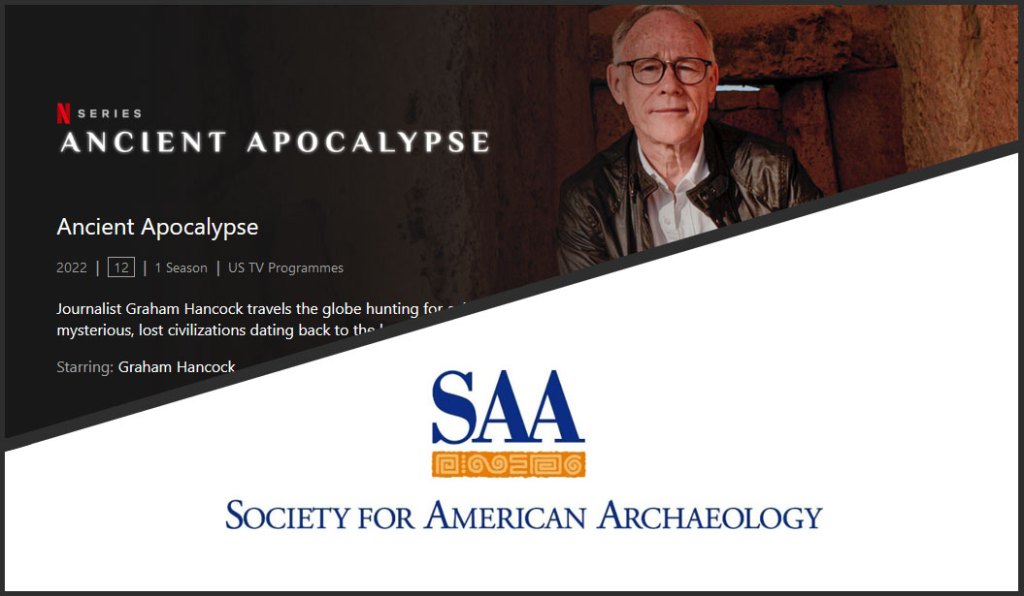
SAA: This series publicly disparages archaeologists and devalues the archaeological profession on the basis of false claims and disinformation.
GH: What false claims? What disinformation? Even archaeologists make occasional factual errors in their papers, and I can’t exclude the possibility, here or there across nearly 30 years of output on this subject, that I may have made some honest factual errors. But I have never knowingly made “false claims” or deliberately spread “disinformation” and would never do so. I have been outspoken about the many failings of archaeology as an institution, but at no point in Ancient Apocalypse is any individual archaeologist disparaged. With its 30th November 2022 open letter, however, the SAA seeks to disparage me as an individual, to defame my reputation for honest reporting and to do harm to me personally. In such a case it is not enough simply to state, without substantiation, that I have made false claims and spread disinformation about archaeologists. Yet the open letter presents no facts and no substantiation only the opinion of the SAA – the honesty and “authority” of which, the SAA seems to assume, must be accepted without question or quibble.
SAA: I write to encourage you to… provide disclaimers about the unfounded suppositions in the show…
GH: What unfounded suppositions? A statement of authority is in no way substantiation for such a slur.
SAA: The effects of this show run directly counter to the purpose, mission, goals, and vision of the SAA.
GH: So, a television series should not have been made because the SAA doesn’t like its content? And the tens of millions of viewers who have engaged with the series should never have been allowed to see it or make up their own minds about its content? Is it the “mission” of the SAA to control the narrative about the human past, to exclude alternative narratives, and to deny viewers the right to make informed choices?
SAA: We have three principal concerns with regard to Ancient Apocalypse: (1) the host of the series repeatedly and vigorously dismisses archaeologists and the practice of archaeology with aggressive rhetoric, willfully seeking to cause harm to our membership and our profession in the public eye…
GH: Since the late 1990’s I, Graham Hancock, the host of the series, have been insultingly dismissed and repeatedly attacked by archaeologists using aggressive rhetoric and seeking intentionally to do harm to my reputation, my family and my work. The SAA’s open letter is just one of the more recent examples of this ongoing highly personalised vendetta.
SAA: (2) Netflix identifies and advertises the series as a “docuseries,” a genre that implies its content is grounded in fact when the content of the show is based on false claims about archaeologists and archaeology.
GH: What false claims? In what ways exactly is the content of the Ancient Apocalypse docuseries not “grounded in fact”? And what false claims about archaeologists and archaeology is its content based on? The open letter offers no substantiation for these grave defamations, nor any proof that the SAA’s own claims about the series are true and grounded in fact.
SAA: (3) the theory it presents has a long-standing association with racist, white supremacist ideologies; does injustice to Indigenous peoples; and emboldens extremists.
GH: This is a spurious attempt to smear by association. My own theory of a lost civilization of the Ice Age, and the evidence upon which that theory is based, presented in Ancient Apocalypse in 2022 and in eight books over the previous 27 years, is what I take responsibility for. It is nonsensical to blame me for the hypotheses of others, either now or in the past, or for how others have reacted to those hypotheses.
SAA: Popular television series such as Ancient Aliens on the History Channel have promoted false claims about the ancient past for many years. These claims frequently rob Indigenous peoples of credit for their cultural heritage. However, Ancient Apocalypse is more harmful than Ancient Aliens. It not only disparages the cultures of Indigenous peoples but also carries the harm a step further by disparaging archaeologists. The combative tone of Graham Hancock damages the public’s perception of archaeology.
GH: Ancient Apocalypse does not in any way “disparage the cultures of Indigenous peoples”; it does, however, claim that the relatively simple technologies that archaeologists attribute to all humans in prehistory are insufficient to explain some key anomalies that prehistory presents us with – including but not limited to ancient, highly sophisticated knowledge of an obscure astronomical phenomenon known as the precession of the equinoxes, knowledge of how to calculate longitude thousands of years before our own civilization could do so, knowledge of the correct dating – to around 11,600 years ago – of the global sea-level rise that modern geologists call Meltwater Pulse 1B, and the chronological implications of the precipitation-induced erosion seen on the Great Sphinx of Giza. I have already addressed the claim that “Graham Hancock damages the public’s perception of archaeology” – a claim rooted in the notion that archaeology, unlike other professions, is somehow above challenge, and that “the public’s perception of archaeology” should be kept in conformity with the perception of archaeology favoured by the SAA. One again it seems that the SAA’s primary motive is to control and monopolise the narrative about the human past.
SAA: After more than a century of professional archaeological investigations, we find no archaeological evidence to support the existence of an “advanced, global Ice Age civilization” of the kind Hancock suggests. Archaeologists have investigated hundreds of Ice Age sites and published the results in rigorously reviewed journals. The assertion that Ancient Apocalypse is a factual “docuseries” or “documentary” rather than entertainment with ideological goals is preposterous. If there were any credible evidence for a “global Ice Age civilization” of the kind Hancock suggests, archaeologists would investigate it and report their findings with rigor according to the scientific methods, practices, and theories of our discipline. If the evidence warranted scientific peer-review, we would acquire funding to test it, publish our results, and promote it in our own outreach materials.
GH: That archaeologists have not found material evidence that would convince them of the existence of a lost civilization of the Ice Age, is not by any means compelling evidence that no such civilization could have existed. The axiom is old but true that “absence of evidence is not evidence of absence” – especially so in the case of archaeology when only limited areas of the Earth’s surface have ever been subject to archaeological survey at all.
The 27 million sq. kms. of prime coastal lands that were submerged by rising sea-levels at the end of the Ice Age, and that are now under as much as 120 meters of water, have hardly been surveyed at all, with the bulk of marine archaeology focussed on shipwrecks from the historical period and only very recently an interest in the submerged continental shelves inhabited during the Ice Age. The 9 million sq. kms. of the Sahara desert, green and fertile for long periods during the Ice Age, have received only very limited archaeological attention. The roughly 6 million sq. kms. of the Amazon that are still hidden under dense canopy rainforest have likewise received minimal archaeological attention until very recently. The massive Ice Age Sunda Shelf, of which the Indonesian islands and the Malaysian peninsula are the surviving remnants after sea-level rise at the end of the Ice Age, has never benefitted from a comprehensive marine-archaeological survey. Moreover, as the reaction of the SAA to Ancient Apocalypse makes clear, archaeologists have already convinced themselves that the very notion of a lost civilization of the Ice Age is preposterous – with the result that no effort is made to mount a targeted search for such a thing, while those outside the profession who have the temerity to mount searches of their own are labelled as pseudoscientists and frauds.
As to the SAA’s reference to what it claims are the “ideological goals” of the series, what are these alleged “ideological goals”? Absent any clarification – and none is provided in the open letter – this is merely another spurious, unsubstantiated slur.
SAA: Contrary to Hancock’s claims, archaeology does not willfully ignore credible evidence nor does it seek to suppress it in a conspiratorial fashion.
GH: I do not claim that archaeology wilfully ignores credible evidence, only that it appoints itself the sole authority on what is or is not “credible” and therefore rules out certain evidence that I and others regard as both credible and significant – such as the geology of the Sphinx, or the fact that Plato’s date for the submergence of Atlantis (9,000 years before Solon’s visit to Egypt, i.e. approximately 9,600 BC, i.e. approximately 11,600 years ago) coincides so closely with the date of Meltwater Pulse 1B as established by modern geologists.
Neither do I claim that archaeology seeks to suppress credible evidence. My claim is that the problem is one of perception within archaeology where, without any “conspiracy” involved, unexamined preconceptions and received wisdom about the origins of civilization inevitably bias judgements about the possibility of a lost civilization of the Ice Age.
SAA: Archaeologists devote their careers and lives to researching and sharing knowledge about the past with the public. When Hancock refers to professionals as “so-called experts” and accuses them of being “patronizing” or “arrogant,” this disparages our public reputation.
GH: I also have devoted my career and life to sharing knowledge about the past with the public. When archaeologists label me as a “pseudoscientist”, a “liar”, a “racist” and a “fraud” they directly disparage my personal reputation. And as I have already stated, no individual archaeologist was disparaged in the series; my critique is focussed on the profession in general, on its paradigm of the origins of civilization – which by definition excludes a lost civilization of the Ice Age – and on its potent, near monopolistic influence, through the education system and through the media, on public perceptions of the past.
SAA: Our archaeological community is not monolithic but extremely diverse. Our membership represents a wide range of nationalities, ethnicities, genders, and beliefs.
GH: Is American archaeology a shining example of ethnic diversity and inclusiveness? Detailed census data for 2010-2019 (‘Archaeology Demographics and Statistics in the US’), suggest otherwise:
Here is an abstract for a recent presentation at the SAA 2021 Annual General Meeting:
Regrettably, after multiple complaints of archaeological disrespect towards indigenous human remains in this presentation, Deborah Nichols, then President of the SAA replied:
“submissions might be flagged if they analyze looted artifacts, report doing work without the appropriate permits, or promote pseudoarchaeology…” No one flagged Weiss’s and Springer’s abstract, Nichols says, though she called their argument “dated.”(Lizzie Wade, ‘An archaeology society hosted a talk against returning Indigenous remains. Some want a new society, April 19 2021
https://www.science.org/content/article/archaeology-society-hosted-talk-against-returning-indigenous-remains-some-want-new)
It is surely a telling comment on the character of the SAA that alarms can be set off by anything perceived as “pseudoarchaeology” but that racist disrespect of Native American remains is permitted and is criticised, if at all, only as “dated”. Science magazine, journalist Lizzie Wade cites indigenous archaeologist Dr Kisha Supernant:
Supernant was shocked to hear such arguments presented at an important archaeology conference. “There are Indigenous members of the SAA, myself included, and there’s so little care given to how a paper like that might have harmed us,” she says. “It was a very difficult experience to sit through that paper … when your very humanity and human rights are being questioned…”
For Supernant, it is too little, too late. She’s leaving SAA and hopes to build a new professional organization, tentatively called the Society for Engaged Archaeology. When she tweeted about her idea… she received a flood of interest and support. “This was the last straw that galvanized a number of us to seriously start doing that planning,” she says. “I understand that institutions are slow to change. But I don’t feel confident that the SAA actually wants to.” (Lizzie Wade, April 19 2021
SAA: Netflix and ITN Productions are actively assaulting our expert knowledge, fostering distrust of our scientific community, diminishing the credibility of our members in the public eye, and undermining our extensive and ongoing efforts at outreach and public education.
GH: I repeat that no individual archaeologist was disparaged in the series. There should be no sacred cows, however, when it comes to the criticism of institutions. My critique of archaeology as an institution is no different from any critique of any large, powerful and influential bureaucracy – such as the United Nations, or a major police force, or a multinational company – and when I see failings I have the right as a human being with free speech to call those failings out, just as I called out the failings of the international aid business in my 1989 book Lords of Poverty. Moreover, the influence of my perception of archaeology as an institution, even on a platform with the massive outreach of Netflix, is minimal by comparison with the all-pervading influence of archaeology through the education system and through the media on public understanding of “the facts” of the past. In short Ancient Apocalypse is an attempt to restore some balance to what has, hitherto, been a very one-sided debate.
SAA: The assertions Hancock makes have a history of promoting dangerous racist thinking. His claim for an advanced, global civilization that existed during the Ice Age and was destroyed by comets is not new. This theory has been presented, debated, and refuted for at least 140 years. It dates to the publication of Atlantis: The Antediluvian World (1882) and Ragnarok: The Age of Ice and Gravel (1883) by Minnesota congressman Ignatius Donnelly. This theory steals credit for Indigenous accomplishments from Indigenous peoples and reinforces white supremacy.
From Donnelly to Hancock, proponents of this theory have suggested that white survivors of this advanced civilization were responsible for the cultural heritage of Indigenous peoples in the Americas and around the world. However, the narratives on which claims of “white saviors” are based have been demonstrated to be ones modified by Spanish conquistadors and colonial authorities for their own benefit. These were subsequently used to promote violent white supremacy. Hancock’s narrative emboldens extreme voices that misrepresent archaeological knowledge in order to spread false historical narratives that are overtly misogynistic, chauvinistic, racist, and anti-Semitic.
GH: There have indeed been suggestions in the past that a comet impact may have been the agency that destroyed a lost civilization of the Ice Age. But neither in Ancient Apocalypse, nor in my books, do I draw upon these prior hypotheses. My work on this matter – in Magicians of the Gods (2015), America Before (2019), and Ancient Apocalypse (2022) – is entirely based on the findings of around 100 scientists published in major peer-reviewed journals since 2006 concerning the Younger Dryas Impact Hypothesis, which remains the subject of extremely active and ongoing research, publication, discussion and scientific debate. (https://cosmictusk.com/ydi-bibliography/).
As to the allegations made in the open letter that my work promotes racism and white supremacism – as well as misogyny, chauvinism and anti-Semitism! – it must, presumably, be an inconvenient fact for the SAA that there is not a hint of misogyny, chauvinism or anti-Semitism in Ancient Apocalypse and that neither race nor white skin are mentioned in any episode of the series. The SAA is therefore reduced once again to smearing by association and to making thinly-veiled accusations that my interest in the possibility of a lost civilization of the Ice Age, most recently explored in Ancient Apocalypse, is in some way inherently racist and white supremacist. Although there is much more to say in refutation, it is sufficient to note here that, since I began work on this subject more than 30 years ago, the locations I have considered as a possible homeland for a hypothetical lost civilization of the Ice Age do not include any part of “white” Europe but do include the ancient Americas, the ancient Sunda Shelf (submerged lands around Indonesia), ancient Antarctica, and ancient India.
So if not from Ancient Apocalypse, where do the SAA’s accusations of racism and white supremacism originate?
The answer is spin around some of the contents of some of my previous books, in particular my 1995 book Fingerprints of the Gods, now 28 years old, where I reference several indigenous Native American myths in which white-skinned bearded gods are portrayed as the bringers of culture and civilization, very often after some great global cataclysm.
Since the SAA is accusing me of empowering racism and white supremacism by citing these myths, the issue of whether or not they were tampered with by the Spaniards becomes central. In its open letter the SAA presents it as an established fact that the myths were indeed tampered with in Spanish interests – and it’s true that growing numbers of archaeologists do believe that. It is not a fact, however. Rather it is a body of opinion and conjecture which even today is subject to dispute and disagreement and which, in the early and mid-1990’s when I researched and wrote Fingerprints of the Gods, was not a prominent view on the subject. Certainly some authorities – for example – Inga Clendinnen in 1991 (Inga Clendinnen, “Fierce and Unnatural Cruelty”: Cortés and the Conquest of Mexico, Representations, University of California Press, Winter, 1991) were very much in the “tampered with” camp. But in stark contrast a great many more equally well-qualified scholars had no doubt that the myths collected by early Spanish visitors to Mexico in the decades after the Conquest were authentic and untampered with.
So when I reported these as authentic indigenous myths in Fingerprints of the Gods in 1995 I not only did so in good faith but also found myself in the good company of, amongst many others, Jacques LaFaye, then Professor of Latin American History at the Sorbonne (Quetzalcoatl and Guadeloupe, 1987), Michael D. Coe, then Professor of Anthropology and Curator in the Peabody Museum of Natural History at Yale University (Mexico, 1988); Mexicanist John Biershorst (The Mythology of Mexico and Central America, 1990); renowned Mexican anthropologist and historian Miguel Leon-Portilla, then at the Instituto Indigenista, Interamericano, Mexico City (The Broken Spears: Expanded and Updated Edition, 1992); David Carrasco, Director of the Moses Mesoamerican Archive at Harvard University’s Peabody Museum of Archaeology and Ethnology (Quetzalcoatl and the Irony of Empire, 1992); and historian Hugh Thomas (Conquest: Montezuma, Cortes and the Fall of Old Mexico, 1993).
None of these works, or the use within them of myths of returning “white saviors” – as the SAA typecasts these complex and varied accounts – attracted the least outcry of racism or white supremacism at the time they were published. Nor do they do so now. Neither have there been accusations of racism and white supremacy made against other authorities who have subsequently drawn upon the same corpus of Quetzalcoatl myths that I drew on in Fingerprints of the Gods in 1995. These authorities include Neil Baldwin (Legends of the Plumed Serpent: Biography of a Mexican God, 1998); John Pohl, Aztecs and Conquistadors: The Spanish Invasion and the Collapse of the Aztec Empire, 2005); and Michael Wood (Conquistadors, 2010).
Of the greatest significance to the ongoing debate over the authenticity of indigenous Mesoamerican myths about a returning “white savior” (again, “white savior” is the SAA’s phrase, not mine) have been two studies in particular. These are the revised edition (2000), with an important new chapter added, of David Carrasco’s Quetzalcoatl And the Irony of Empire, and H.B. Nicholson’s magisterial Topiltzin Quetzalcoatl: The Once and Future King of the Toltecs (2001, reprinted in 2008 and again in 2015).
Although based on his 1957 PhD thesis, which I did not have the opportunity to examine when I was researching Fingerprints of the Gods,Nicholson’s Toplitzin Quetzlcoatl strongly reinforces the authenticity and legitimacy of the same indigenous Mexican myths, collected by Spaniards in the decades after the Conquest, that I drew upon. Yet far from there being any outcry about it, the book has been twice reprinted since 2001 and widely lauded by scholars. As David Carrasco puts it: “No one has been able to organise the existing primary sources or interpret them as deeply and clearly as he has. No one has surpassed Nicholson, and no one will.”
It’s not necessary to multiply examples here. To state matters briefly, my response to the SAA’s accusations of racism and white supremacism is that they are not based on a representative analysis of the content of my work, or of my general outlook and behaviour, but solely on the fact that I cited certain indigenous myths from the Americas that certain scholars think were tampered with by Spaniards. In Fingerprints of the Gods, I concluded responsibly, in line with consensus of many authorities at the time, that the myths are authentic and I reported them accordingly.
There is a further point that needs to be driven home, however. If the myths were not tampered with by the Spaniards, if they are genuinely indigenous as I believed in 1995, and as I still believe today, then even the elastic logic of the SAA cannot stretch to attaching a racist or white-supremacist burden to them. On the contrary, it seems to me that if any party is guilty of racism and white supremacism here it is SAA itself with its predominantly-white membership and its claim to possess superior knowledge of the truth about indigenous myths – knowledge superior even to that of the indigenous inhabitants of Mexico in the 16th century who shared those myths in the first place.
I will close with comments by David Carrasco on anthropologist Inga Clendinnen’s attempts to dismiss (on the grounds that it is a “splendidly implausible” web of Spanish fictions) the notion, central to the myths, that the Aztecs believed Cortes and the white-skinned, bearded Spaniards “were the returning Quetzalcoatl” — and the parallel notion that this belief greatly weakened Moctezuma, making him hopelessly indecisive and ultimately leading him to abdicate. These myths primarily come down to us through the 16th century Florentine Codex of Fray Bernardino de Sahagun who was fluent in Nahuatl (the Aztec language), who worked assiduously with teams of indigenous knowledge-keepers to prepare the twelve books of the Codex, and who was undoubtedly the most thorough and principled of all the Spanish collectors and compilers of the indigenous myths, traditions and histories of Mexico. Clendinnen, however, wants to claim that the myths of the returning Quetzalcoatl have no indigenous origin, were entirely concocted by Cortes himself in a 1520 letter to the King of Spain and were later picked up second-hand by Sahagun.
“I have no doubt”, writes Carrasco,
that Cortes was striving to impress the royal mind with his extraordinary management skills, or that his literary craft was elegant and profoundly political… What is challenging to me is Clendinnen’s claim that this Spanish political fiction of both Quetzalcoatl returning and Moctezuma’s vacillation and collapse was picked up by Sahagun, who ‘powerfully reinforced’ it, erroneously thinking it was an Indian belief when in fact the ruler’s gesture of abdication was a ‘very late-dawning story, making its first appearance thirty and more years after the Conquest.’ The stunning implication is that this Spanish fiction – the story of Moctezuma’s paralysis – parades down the years through the literature and scholarship and is internalized by commentators less wary than Clendinnen, all the way to Leon-Portilla, who falls unconsciously under Cortes’ charismatic pen along with the rest of us. This means Leon-Portilla’s extensive Nahuatl training and sense of the Aztec ethos (not to mention Sahagun’s profound familiarity with Spanish-Native exchanges) contribute no effective critical stance in relation to the Spanish literary craft… which later Spaniards were not aware of and which a number of Indians internalized as their own…
Carrasco concludes that the work of Clendinnen and others carries “a bloated sense, a transcendent sense, that the Spaniards, led by the incomparable Cortes, made up the facts of the story while the Indians merely repeated them, unknowingly…”
The same sense of superior knowledge – of claiming insights that the indigenous inhabitants themselves supposedly did not share — applies to the spin put by the SAA on the myths of Quetzalcoatl’s return that I reported in Fingerprints of the Gods. Far from seeking to promote racism and white supremacism, my purpose in that book, and in all my subsequent work – very much including Ancient Apocalypse – has been to honour indigenous voices and perspectives in ways that the SAA, despite much virtue-signalling, does not.
Source: Graham Hancock
ORDER YOUR FREEDOM BOOKS TODAY!
Dawning of the Corona Age: Navigating the Pandemic by Johnny Freedom
(3rd Edition)
(Printed, Bound Book or PDF)
This comprehensive book goes far beyond the immediate impact of the “pandemic”, but along with the reader, imagines how our human world may be altered, both positively and negatively, long into an uncertain future. Available Now!
$25.00 ~ PRINT BOOK
$10.00 ~ EBOOK
Sovereign’s Handbook by Johnny Liberty
(30th Anniversary Edition)
(3-Volume Printed, Bound Book or PDF)
A three-volume, 750+ page tome with an extensive update of the renowned underground classic ~ the Global Sovereign’s Handbook. Still after all these years, this is the most comprehensive book on sovereignty, economics, law, power structures and history ever written. Served as the primary research behind the best-selling Global One Audio Course.Available Now!
$99.95 ~ THREE-VOLUME PRINT SERIES
$33.33 ~ THREE-VOLUME EBOOK
Posted in Awakening, Evolution, History/Herstory, Insights, Realizations | Leave a Comment »
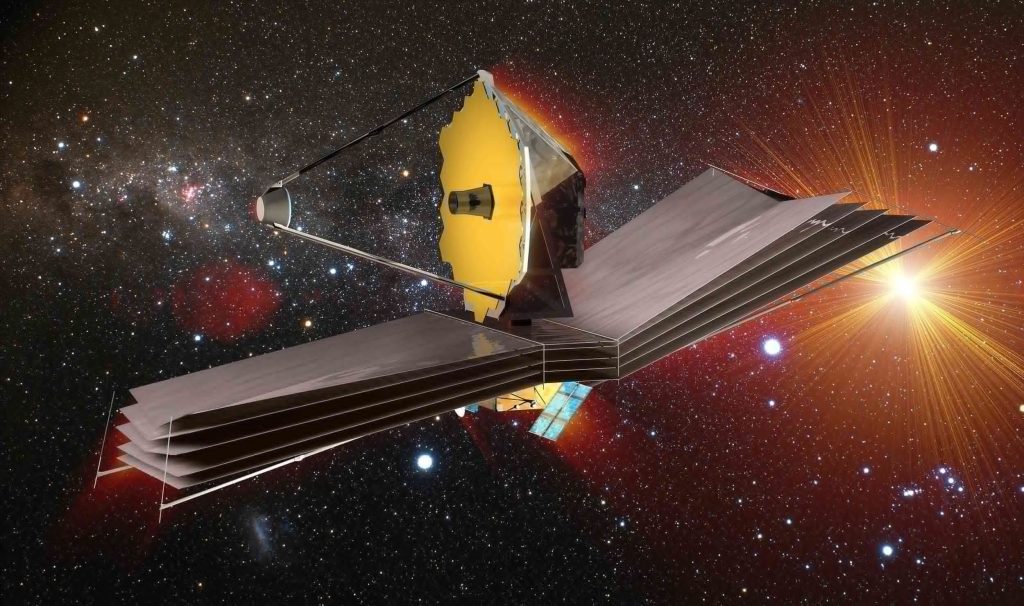
By Vladislav Tchakarov
Twenty-five years after development began, the James Webb telescope is on its way to the second Lagrange point in the Sun-Earth System, where it will conduct the most advanced observations to date. It will study the processes that occurred in the early Universe, the evolution of galaxies from the Big Bang to the present, explore exoplanets and their atmospheres, and more.
Name and Budget
Initially, the telescope bore the short but difficult to pronounce name NGST (Next Generation Space Telescope). In honor of Webb, who ran NASA in the 60s of the last century, it was renamed in 2002. It was estimated that the total cost of NGST will be $ 500 million, and it will go into space in 2007.
However, in 2005, the project was seriously revised, as well as the estimate: the price increased nine times, to 4.5 billion, and the European and Canadian space agencies joined the development. The project has been repeatedly criticized for ineffective management, for underestimating the complexity and time costs.
Since 2010, the James Webb, which had risen in price, began to eat off the budgets of other NASA projects – for example, the WFIRST telescope – and received the nickname “telescope that ate astronomy” from the journal Nature. By 2021, its total value had grown to nearly $10 billion.
Completion and launch were postponed 14 times
At the same time, as more and more money disappeared in the womb of the project, the launch date was transferred and rescheduled – it was shifted as much as 14 times. The most resonant transfer occurred in 2018 – then the expert committee for the development and testing of the telescope revealed a whole bunch of problems.
For example, there were valves damaged by an incorrectly selected cleaning solvent, incorrect wiring, and poorly installed heat shield fasteners – some of them came off right during vibration tests. And, of course, in 2020, “Webb” was among hundreds of scientific projects, whose deadlines “went” due to the coronavirus pandemic.
Fortunately, in the end, all the problems of the space telescope were finally solved. The construction, which was attended by contractors from 20 countries, was completed in 2019 – after almost two more years the telescope passed all kinds of tests. In October 2021, the observatory was transported across the ocean to French Guiana at the European Kourou cosmodrome and began to prepare for the launch.
It is better than all ground-based telescopes
There are ground-based telescopes that can try to compete with “James Webb” in vigilance. VLT, Keck Observatory, GTC are already working, ELT and GMT are preparing to enter service.
However, even the most advanced adaptive optics systems are able to correct atmospheric interference only for small areas of the sky near the reference stars, which makes observations with a large field of view inferior in detail to space telescopes.
In addition, in the infrared range, ground-based telescopes are much inferior to space ones: water vapor in the atmosphere absorbs part of the radiation.
James Webb has a massive golden mirror
The main mirror of the observatory is a unique optical system. It is six times larger than that of the Hubble (its area is 27 square meters), and at the same time, it is lighter by almost a third – 625 kilograms against almost one ton. This is because beryllium was not used as the main material for mirrors in the past, but beryllium is a very light and durable material, which also has a lower coefficient of thermal expansion compared to glass.
Many parts of supersonic aircraft are made from beryllium alloys, and it has already been tested as a material for a mirror on the Spitzer and IRAS telescopes. The mirror blanks have been tested for resistance to micrometeoroid bombardment, which has shown that they are able to withstand them.
The preforms were obtained by pressing beryllium powder in stainless steel molds. They were then finalized, sanded, and polished. Then each of the mirrors was covered with a thin layer of gold by the method of vapor-phase deposition in a vacuum: the thickness of the gold coating is one hundred nanometers, and in total, the observatory took 48.25 grams of pure gold, which is comparable to the mass of a golf ball.
Gold was not chosen by chance – it better reflects infrared radiation and the long-wavelength part of optical radiation. The gold plating is coated with a thin layer of amorphous silicon dioxide to protect it from scratches. The main mirror was completed in 2016.
The mirror consists of 18 foldable segments
If the James Webb mirror was monolithic, then it simply would not fit under the launch vehicle fairing, so it was made segmented. It consists of 18 segments, each weighing 20 kilograms. The two side sections of the mirror, each of three segments, fold down to fit into the rocket.
The hexagonal shape of the segments makes it possible to obtain a mirror of an approximately round shape, 6.5 meters in diameter, without gaps (it was originally planned that the main mirror would be 8 meters long, but this idea was abandoned when the project was revised). The segments are controlled by 126 small motors.
There are four scientific instruments onboard
• NIRCam visible and near-infrared camera;
• NIRSpec visible and near-infrared spectrograph;
• MIRI mid-infrared instrument, including camera and spectrograph;
• the FGS-NIRISS instrument, which includes a precision telescope pointing sensor, a camera, and a slitless spectrograph.
NIRCam, NIRSpec, and FGS-NIRISS use cadmium telluride and mercury telluride detectors and will be cooled to 39 kelvin. MIRI uses arsenic-doped silicon detectors and will operate at 7 kelvin thanks to an optional helium cryocooler.
It will operate in the second Lagrange point in the Sun-Earth System
The halo orbit around the second Lagrange point in the Sun-Earth system, located 1.5 million kilometers from Earth, is an ideal place for a telescope, which must be cooled to low temperatures. In low-earth orbit, it would need huge reserves of coolant, but in a halo orbit, only a supply of helium for the MIRI instrument will be enough, and the rest of the systems will cool down by themselves – due to radiation.
In addition, near L2, the observatory will be able to hide with a heat shield from the Sun, Earth, and Moon at the same time. At the same time, James Webb requires relatively little fuel to stay in orbit.
When will James Webb begin operation?
In total, the flight to the second Lagrange point will take 29 days. During the first week of flight, the telescope will deploy all layers of the heat shield and extend a two-meter support tower that separates the optical system from the main body of the observatory. For the second week, the telescope will deploy the optical system so that it gradually begins to cool down to operating temperatures.
When James Webb arrives at his desk, it will begin a three-month optical alignment procedure. After that, it will take two months to calibrate the scientific instruments. And only six months after the launch, the telescope will receive the first full scientific data. So the first shots will have to wait.
James Webb has four main scientific tasks
• Find the first galaxies and stars formed after the Big Bang
• Determine how galaxies have evolved from their formation to the present
• Explore the formation of stars and planetary systems around them
• Study the physical and chemical properties of exoplanets and their atmospheres, including in terms of potential habitability
James Webb has a catalog of ‘first targets’
The list of the first targets contains 286 applications, which in total will take about six thousand hours of the observational time of the telescope. It includes already discovered exoplanets, discs around young stars, very distant galaxies, quasars and protoclusters, galaxies in the Local Universe, objects of the solar system such as comets, asteroids, trans-Neptunian objects, centaurs, and ice giants, as well as stars and nebulae of the Milky Way and its satellite galaxies.
The telescope will “look into the past”
Yes. Due to the finiteness of the speed of light, we can see the processes that took place in the Universe millions and billions of years ago, observing very distant objects. The observatory should consider the very first signs of star formation, which began 100-250 million years after the Big Bang, as well as the first stars and galaxies that existed in the era of Reionization, including quasars containing active supermassive black holes. Thus, it will be possible to test the evolutionary models of galaxies.
James Webb will begin a new era in Exoplanet exploration
The telescope will be able to directly register radiation from Jupiter-like exoplanets from the stars closest to us, as well as to detect exoplanets by the transit method (at the moment they intersect the disk of their stars). In this case, the sensitivity of the telescope will make it possible to determine even the approximate composition of their atmosphere from the transmission spectra.
In particular, the data from James Webb will be enough to understand whether there is water vapor, carbon dioxide, isoprene, and methane in the atmosphere of a particular exoplanet, which may indicate the possibility of life there.
The new telescope will also pay attention to the protoplanetary disks around young stars and the star-forming region. Thus, using Webb’s data, it will be possible to trace the formation of both stars and planets around them.
What about Solar System studies?
James Webb will observe all bodies in the solar system that are farther from the sun than the earth. These are comets, trans-Neptunian objects, dwarf planets, asteroids, as well as Mars, Jupiter, Saturn, Uranus, Neptune, and satellites of gas giants such as Enceladus or Europa.
James Webb will also help with studying dark matter
The observatory will observe gravitational lenses, which can be played by galaxies and galaxy clusters, which makes it possible to estimate their mass and the proportion of dark matter in them. In addition, James Webb will record very distant supernova explosions, which will make it possible to clarify the rate of expansion of the Universe at different times of its existence.
James Webb has a surprisingly short design life
The telescope should work for at least five and a half years, and 10 years after launch, its fuel reserves will come to an end, which means it will lose the ability to maintain a stable halo orbit around the Lagrange point.
What will happen to the telescope afterward has not yet been determined, but it can, for example, be put into a heliocentric orbit, where it will remain forever in a disabled state, as was the case with the Herschel infrared telescope. At the same time, astronomers hope that the technical condition of the Hubble will allow the two telescopes to work together for at least several years.
Other Sources:
• Jenner, L. (2021, March 29). NASA’s Webb Telescope General Observer Scientific Programs selected. NASA.
• Malik, T. (2021, December 27). James Webb Space Telescope successfully deploys Antenna. Space.com.
• Wolchover, N. (n.d.). The Webb Space Telescope Will Rewrite Cosmic History. If It Works. Quanta Magazine.
Source: Curiosmos
ORDER YOUR FREEDOM BOOKS TODAY!
Dawning of the Corona Age: Navigating the Pandemic by Johnny Freedom
(3rd Edition)
(Printed, Bound Book or PDF)
This comprehensive book goes far beyond the immediate impact of the “pandemic”, but along with the reader, imagines how our human world may be altered, both positively and negatively, long into an uncertain future. Available Now!
$25.00 ~ PRINT BOOK
$10.00 ~ EBOOK
Sovereign’s Handbook by Johnny Liberty
(30th Anniversary Edition)
(3-Volume Printed, Bound Book or PDF)
A three-volume, 750+ page tome with an extensive update of the renowned underground classic ~ the Global Sovereign’s Handbook. Still after all these years, this is the most comprehensive book on sovereignty, economics, law, power structures and history ever written. Served as the primary research behind the best-selling Global One Audio Course.Available Now!
$99.95 ~ THREE-VOLUME PRINT SERIES
$33.33 ~ THREE-VOLUME EBOOK
Posted in Black Hole, Earth, Evolution, Galaxy, Quantum Physics, Solar System, Space, Time, Universe | Leave a Comment »



